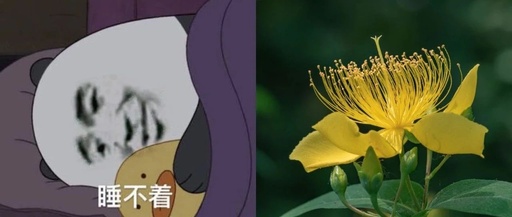If you have ever searched for insomnia remedies on e-commerce platforms, you might have been recommended St. John’s Wort Extract as various sleeping pills are classified as controlled substances.

This article is not promotional, feel free to consume.
With a slogan of natural herbs and a fresh, natural image of yellow flowers, it appears harmless. The foreign name seems sophisticated, but you might have seen it growing by the roadside in China. Curious, you might search for it and find the name Guanyelianqiao (贯叶连翘). Is it the same Lian Qiao (Forsythia) we are familiar with? More importantly, can it really treat insomnia?
Is this roadside yellow flower Lian Qiao?
St. John’s Wort, known in English as St. John’s Wort, is evidently named after John the Baptist, who baptized people in the Jordan River, including Jesus. John the Baptist was born on June 24, six months before Jesus, coinciding with the summer solstice. The traditional festival in Northern Europe on this day celebrates the birth of St. John, and this plant blooms with brilliant yellow flowers around this time, leading Westerners to name it St. John’s Wort.

Da Vinci’s famous painting of John the Baptist, currently housed in the Louvre, France.
However, St. John’s Wort is not exclusive to foreign lands; there are subspecies in China. Yet, ancient Chinese texts seem to overlook this common wild herb, with little mention of it. Nowadays, many refer to it as Guanyelianqiao (贯叶连翘), while some texts call it Tulianqiao (土连翘). The term ‘guanyelian’ means the leaves appear to be pierced by the stem, which is quite vivid, but the name ‘Lian Qiao’ is puzzling—Lian Qiao is a plant from the Oleaceae family, blooming in spring with long branches; whereas this plant has flowers on upright stems filled with leaves, with more stamens resembling a peacock’s crown. Aside from the similarity in petals, they are fundamentally unrelated.
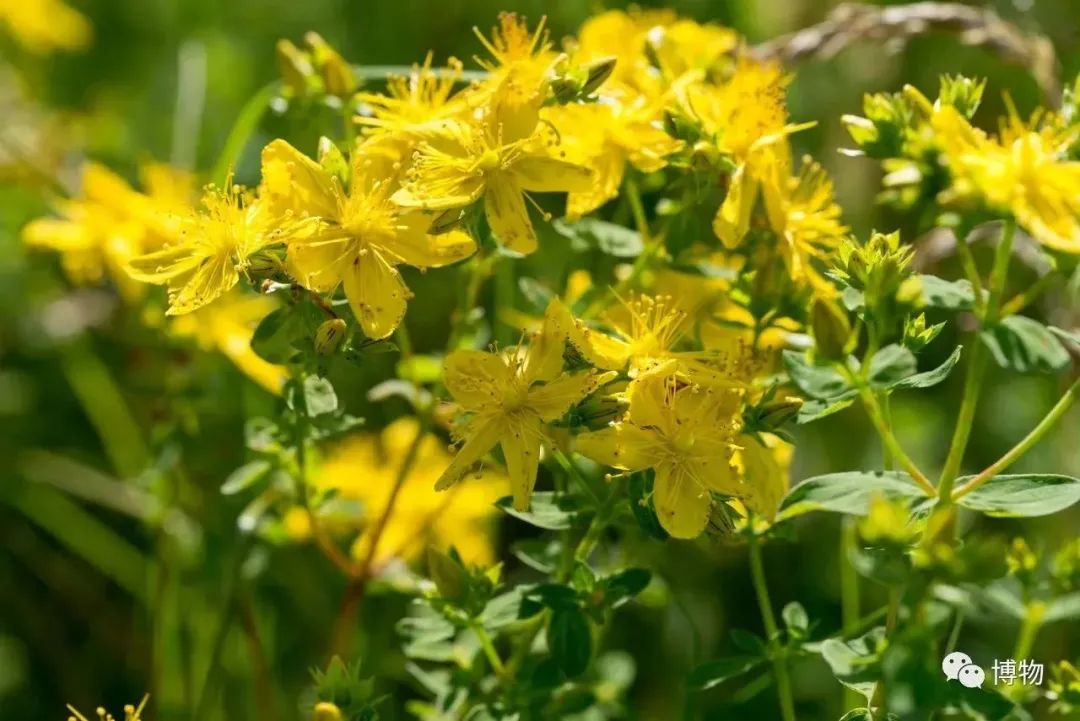
Guanyelianqiao, with five open petals, its stamens are quite eye-catching.
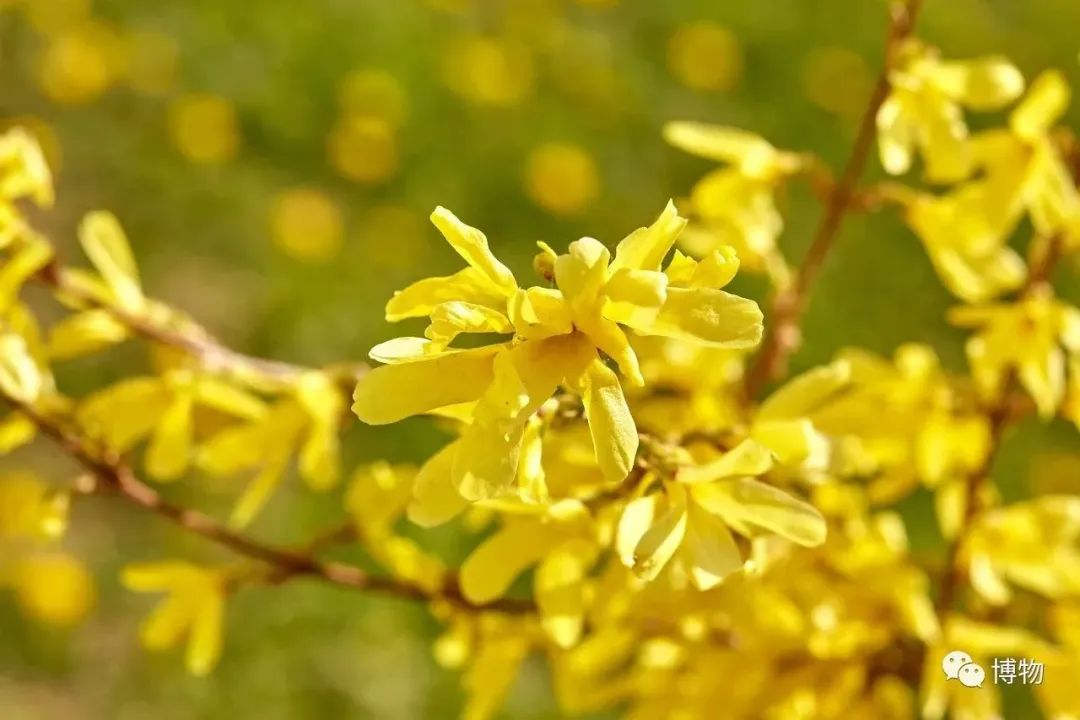
Lian Qiao, which many will mistake for the early spring flower in a few days.
In botanical classification, it belongs to the Clusiaceae family, genus Hypericum, so the true scientific name of St. John’s Wort is Guanyejinsitao (Hypericum perforatum).
The native species in China should be Jinsitao (Hypericum monogynum), commonly known as Dog Flower, which is an evergreen shrub now commonly seen along roadsides in central and southern China. In 1753, a British earl obtained seeds from a friend in China and planted them in both a greenhouse and outdoors. In the greenhouse, it bloomed most of the year, while outdoors, this inconspicuous plant bloomed from summer to autumn, enduring the harsh European winters for half a century. Therefore, it also has a less common name, Chinese Jinsitao (H. chinense), and some foreigners refer to this species as Chinese St. John’s Wort.
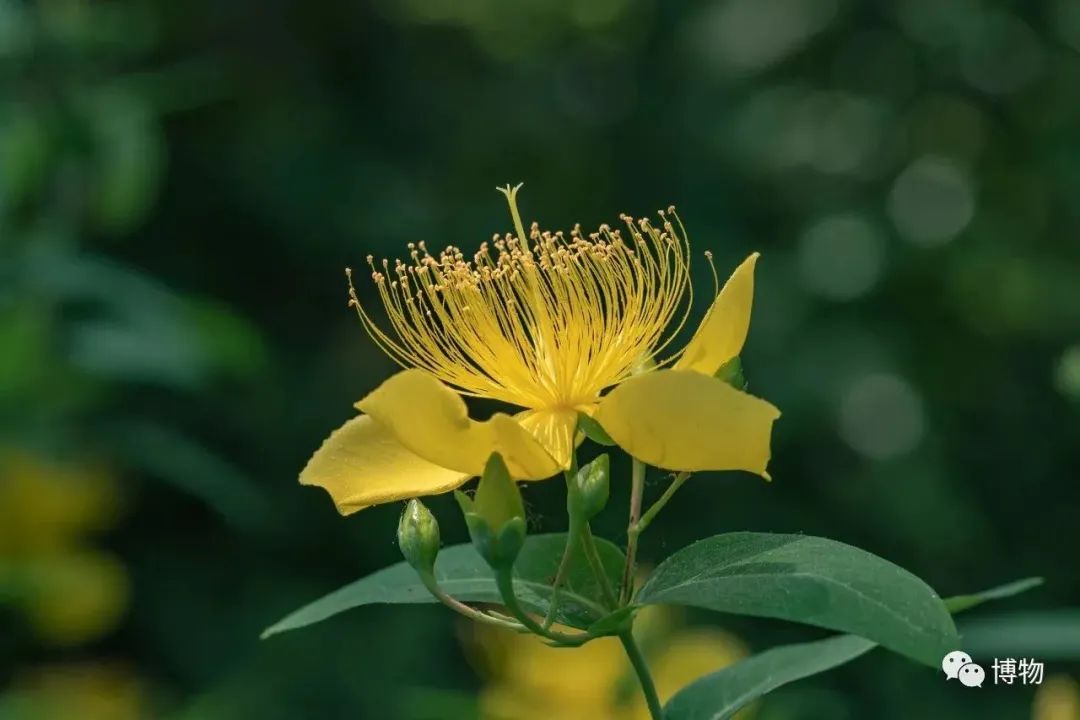
Each flower has about 150 ‘golden threads’, also known as golden line butterflies.
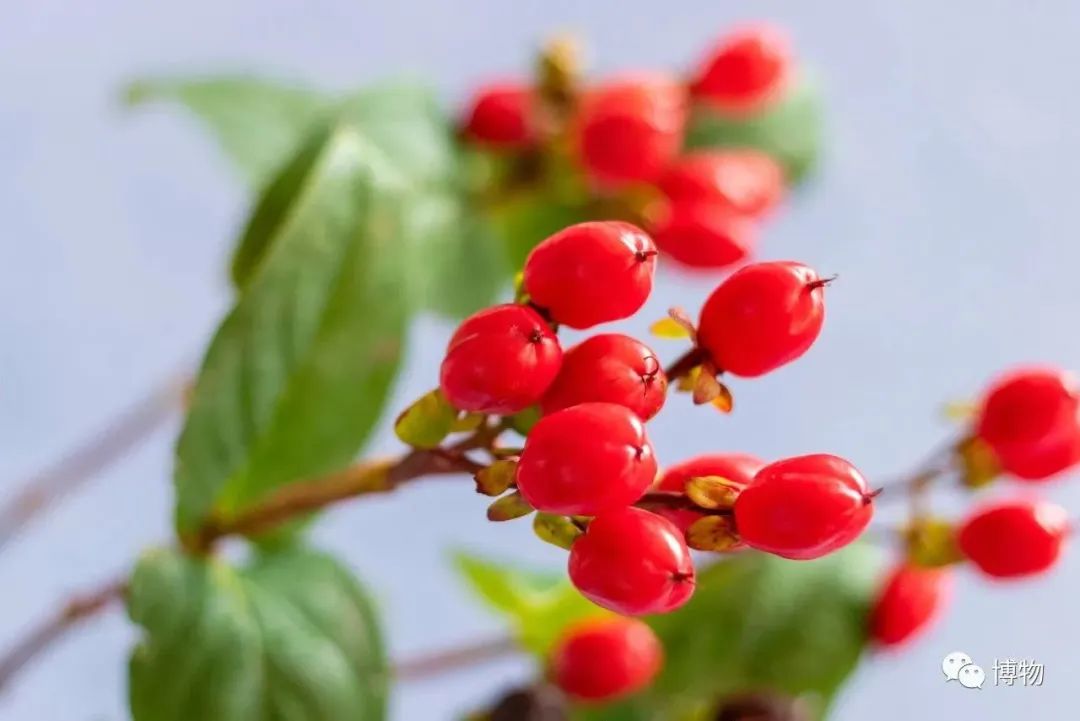
There are also many varieties of Jinsitao used for ornamental fruit.
However, existing research indicates that the chemical components of these two Jinsitao species may differ, leading to confusion about their relationships.
What relationship do Mangosteen and Jinsitao have?
The genus Hypericum may not be well-known, but its higher classification—Clusiaceae—is familiar to artists and designers, as the color ‘Clusiaceae yellow’ is commonly used in painting and decoration.
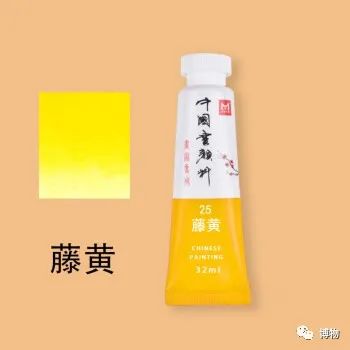
Invite an art student to explain the differences between Clusiaceae yellow, goose yellow, and lemon yellow.
In fact, Clusiaceae yellow pigment is derived from the resin of the Garcinia hanburyi tree, which is said to be collected from trees over ten years old. The collected resin must dry for a year, making it a relatively precious pigment in ancient times.
Due to its origin in Southeast Asian countries like Cambodia, Chinese and Japanese artists early on applied it in their works, while it wasn’t until the 17th and 18th centuries that Europeans widely used it, believing this pigment would give figures a golden glow. However, natural Clusiaceae dye is toxic and has gradually been replaced by safer modern compounds.
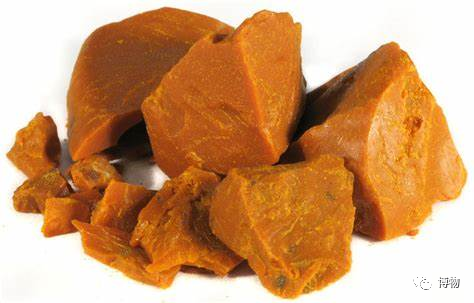
Natural Clusiaceae pigment blocks, not curry blocks.
Other plants in this family are also well-known. For example, the tropical fruit we commonly eat—Mangosteen is another star under the Garcinia genus, scientifically named Garcinia mangostana, originally from the Maluku Islands in Indonesia, now widely cultivated in tropical provinces of China.
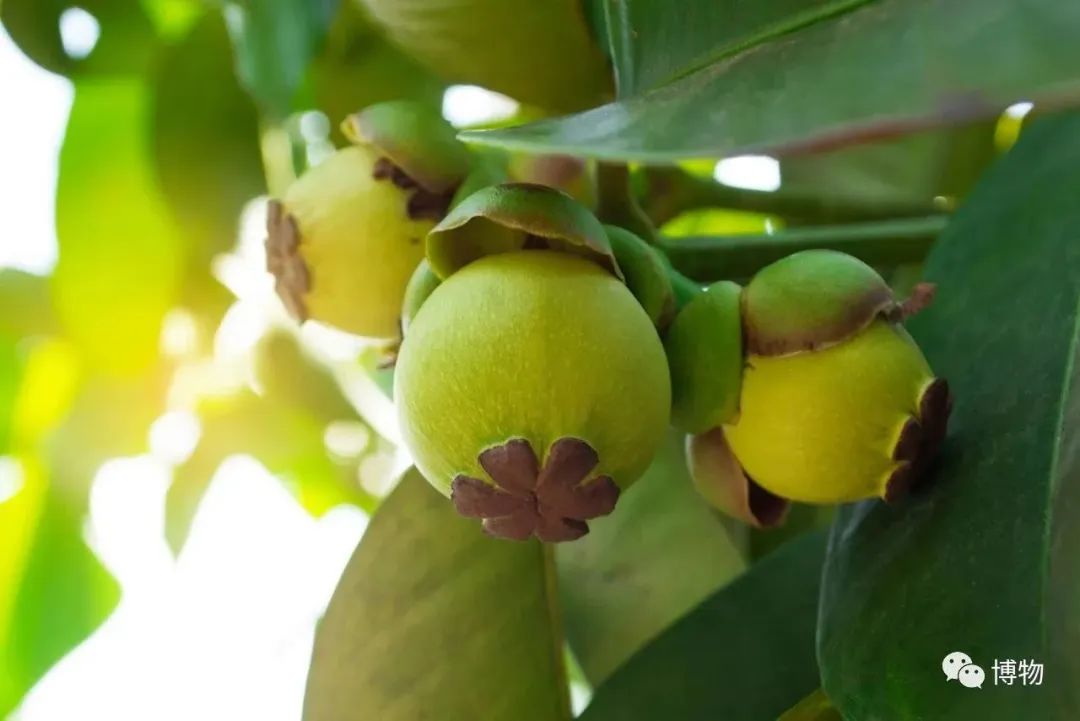
Unripe Mangosteen, I bet it has six segments of flesh.
The Clusiaceae family also includes Garcinia species like Jinsili and the Tectona grandis, which can be used for high-quality timber. However, due to this, they have been heavily logged and are now listed as protected plants. Additionally, the seeds of Tectona grandis contain a lot of oil, which can be used to make soap. Coupled with our introduction of medicinal Jinsitao, it can be said that each has its unique talents.
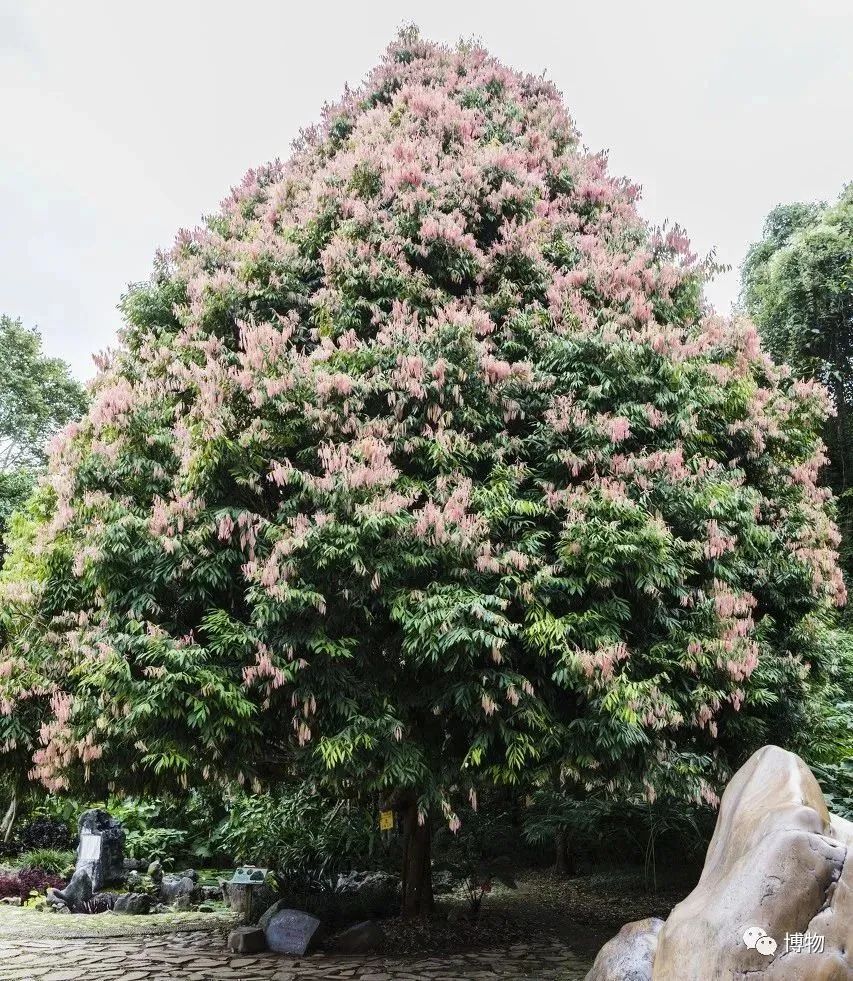
Tectona grandis furniture, the Tectona grandis chopsticks.
Not all medicines can be taken casually!
Now let’s discuss whether St. John’s Wort supplements can treat insomnia and anxiety. Since ancient Greece, people have discovered that St. John’s Wort can heal. Western medical pioneers Hippocrates and Galen used it to treat wounds and as a diuretic. In the Middle Ages, it was used to treat neuralgia and diseases of the kidneys or lungs. After the Japanese introduced the native species to China, it was used to treat gynecological diseases. It seems that people everywhere regard it as a miraculous herb, which is why so many flowers bloom in midsummer, and this inconspicuous little flower is named after a saint from a religious story.
Of course, modern scientists have found it is not so miraculous, but it does affect the central nervous system. The hypericin and other flavonoids in St. John’s Wort can inhibit the reuptake of serotonin (5-hydroxytryptamine), increasing serotonin levels in the body, which has a calming effect and improves mood, showing some efficacy for depression.

Low serotonin can also lead to constant hunger, forgetfulness, irritability…
Image source: YouTube
However, since St. John’s Wort is metabolized by the liver, it is a liver enzyme inducer that can affect the efficacy of many medications, including calcium channel blockers, statins, oral contraceptives, warfarin, etc. Moreover, if this herb is used with monoamine oxidase inhibitors, it may cause serotonin syndrome, with symptoms including elevated body temperature, tachycardia, and hypertension, which can be life-threatening. Long-term use of this herb can also increase skin sensitivity to light.
Because it has clear pharmacological activity, it should not be taken like a vitamin. Although what we can buy is likely at the supplement level, it is still advisable to consult a pharmacist or physician before use, based on individual circumstances. Moreover, supplements cannot replace medications; if insomnia significantly affects your life, it is best to see a doctor.

If you see these little yellow flowers with feather crowns by the roadside, remember that their small stature hides great energy, but don’t just pick them to eat for sleep…

Written by | Xiao Xu
Some images | Tuchong Creative
WeChat Editor | Zhao Zhiyu

